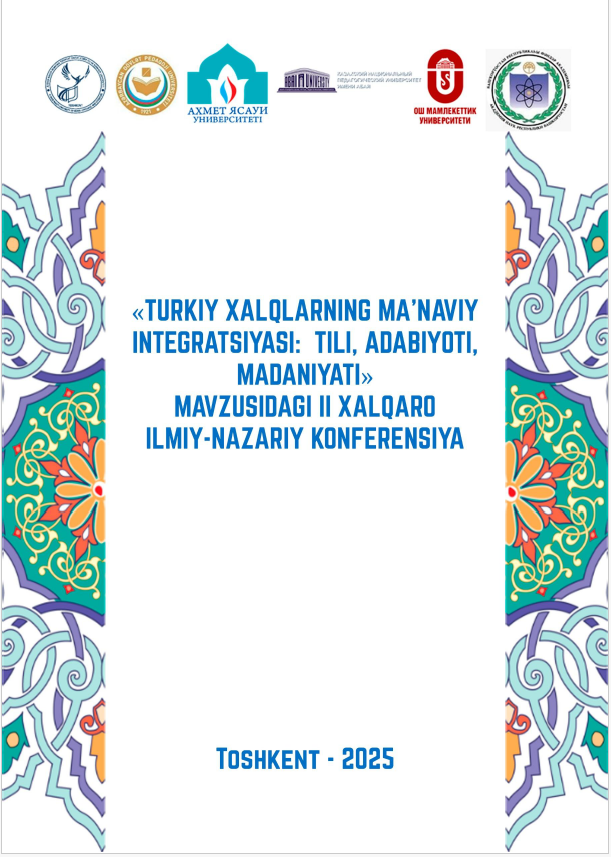ON ONE APPROACH TO COMPARATIVE CHARACTERISTICS OF GRAMMATICAL FUNCTIONS OF CASE SUFFIXES IN THE UZBEK AND KYRGYZ LANGUAGES
Keywords:
Turkic languages, Uzbek, Kyrgyz, casusology, case category, case suffixes, primary cases, derivative cases, culture, communityAbstract
The relevance of the article is due to the need to describe the category of case in Turkic languages in accordance with the natural features of its grammatical structure and functioning, the importance of determining the essence and composition of cases in these languages, taking into account the specificity of the agglutinative structure of their morphology and the insufficiency of grounds for distinguishing the six-member paradigm in Turkic cases according to the Russian case model. The purpose of the article is to demonstrate, using the example of the Uzbek and Kyrgyz languages, the importance of recognizing the polynomial paradigm of cases to explain a number of common morphological phenomena of related languages and the significance of such an approach for the theory and practice of comparative morphology. The article proves the impossibility of transferring the Russian inflectional case model to the agglutinative structure of the Uzbek and Kyrgyz cases, distinguishes between primary and derivative cases in these languages, and substantiates the need to recognize a thirteen-member declension paradigm in them that objectively reflects their morphological structure. The article uses the methods of comparison, analogy, and juxtaposition. The results of the study can be useful for typological, comparative, and applied morphology.

